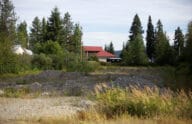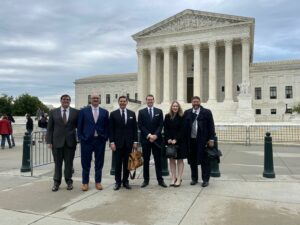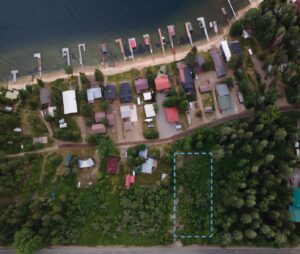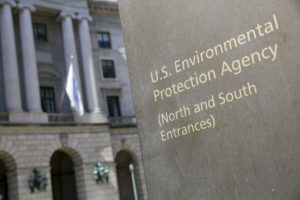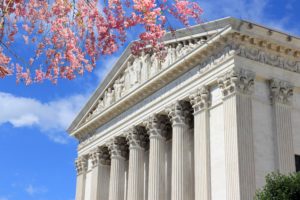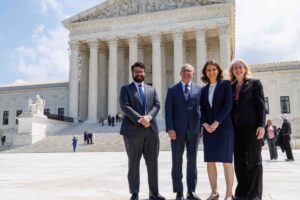With Sackett decision, Supreme Court says agencies can’t gift themselves unlimited powers
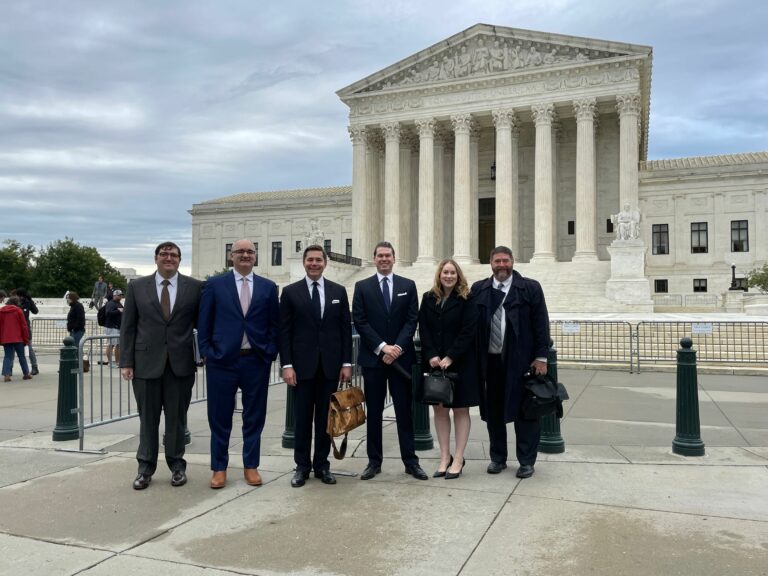
From a single word in the 1977 Amendments to the Clean Water Act, the federal government built a mighty regulatory empire over millions of acres of private property. Last Thursday, thanks to Mike and Chantell Sackett, their attorneys at Pacific Legal Foundation, and nine Justices at the Supreme Court, the borders of that empire receded. Once again, the government is confined to its constitutional and statutory borders. The message should be clear: Federal administrative agencies cannot arrogate unto themselves power that Congress never gave them. Here, Congress never gave the EPA and Army Corps of Engineers the power to regulate wetlands disconnected from navigable waterways.
The original Clean Water Act of 1972 was written to make navigable waters “fishable and swimmable” in a decade. The idea was that the federal government would regulate dumping pollutants into rivers, lakes, and oceans. However, in the mid-’70s, with prompting from some aggressive court decisions, the Army Corps began to slowly expand its jurisdiction to include not only discharges into such water, but also into saturated soils and wetlands. That was even though the word “wetlands” nowhere appeared in the regulatory scheme set out in the 1972 law.
It wasn’t until the Clean Water Act was amended again in 1977 that the word wetland crept into the law, and then only once in the context of giving states authority to regulate discharges—including discharges into “wetlands adjacent” to navigable waters. In the absence of any clear legislative language defining what kinds of wetlands the federal government can regulate, we’ve had an endless parade of conflicting, impossible-to-understand definitions emanating from different administrations for nearly five decades. At various times, the Justices at the Supreme Court have called the regulations “notoriously unclear,” “hopelessly indeterminate,” and “unconstitutionally vague.” A hallmark of all of them has been maximum ambiguity. The gap between certainty and legal punishment has been a chasm of peril for landowners.
Over the years, PLF has represented, among many others, farmers prohibited from plowing their fields, a father and son team who spent 18 months in federal prison for putting clean sand on land that a federal judge later called “subdivided dry land,” and another man who died while waiting for the Supreme Court to take his case after he was jailed for building a fire-fighting pond miles from the nearest navigable waterway.
Into this chasm stepped Mike and Chantell Sackett—a working-class couple who wanted to build a modest family home. They found the perfect lot in a residential neighborhood a few blocks and several hundred feet from Priest Lake, a small recreational lake in Northwest Idaho. In April of 2007, they began to prepare their property for their home. That’s when they received a visit from a local EPA official who told them to stop because they were filling a wetland. The official told them their property was on the official map of wetlands. But when the Sacketts looked at the map, their homesite wasn’t on it. The EPA brushed off that discrepancy by saying the maps weren’t accurate, and that it was still a wetland subject to federal authority.
Even though the experts the Sacketts hired couldn’t find any wetlands, the EPA sent the Sacketts a compliance order. They were ordered to remove all the dirt they had put on their property, plant wetland vegetation and surround it with a fence, wait a few years, and then apply for an after-the-fact-permit for the work they had done—and then undone. Failure to obey would subject the Sacketts to fines of tens of thousands for every day the fill remained. They weren’t given an opportunity to even challenge the EPA’s determination that there were wetlands on their property.
They sued and PLF attorneys stepped in. The first issue was whether they had a right to challenge the wetland finding in the first place. After a federal district court and the Ninth Circuit said “no,” the Supreme Court took up the case. In 2012, a unanimous Court held that the Sacketts had the right to challenge the wetlands finding before being forced to obey the compliance order.
So back to the lower courts the case went—this time to determine whether there were, in fact, any wetlands on the lot subject to federal jurisdiction. Not having enough evidence to prove its case, the EPA asked the trial court permission to go onto the Sacketts’ property to collect more samples, take test borings, and do all sorts of investigatory work. The trial court said yes. And after the evidence was collected, and the court sat on the evidence for years, it finally decided, seven years later, that, yes, there was a small spot on the lot that contained wetlands. But the Sacketts objected, saying even if that were true, that land still had no connection to any navigable waterway, and the federal government had no jurisdiction over the property. The court agreed with the EPA, reasoning that the Sacketts’ lot was in the “neighborhood” of some other wetlands to the north of and across a paved road from the Sacketts’ property. That wetland, in turn, was adjacent to a small ditch, which flowed south and eventually reached Priest Lake, which was used for recreation and therefore navigable and subject to federal jurisdiction.
The Ninth Circuit, unsurprisingly, agreed. Attorneys for PLF then again asked the Supreme Court to intervene, pointing out that for over 40 years the definition of a wetland has been hopelessly confused. Most confusing, PLF argued, was what sort of connection was enough for there to be federal control over the alleged wetland. While the EPA argued it only had to be “connected” in some vague hydrological way, the Sacketts argued there had to be an actual surface water connection to a navigable water.
On Thursday, the Supreme Court unanimously agreed with the Sacketts that the EPA had no jurisdiction over the land. The Justices had different theories on exactly what does fall under the scope of the Clean Water Act; but in the majority opinion written by Justice Samuel Alito, the Court held that “the CWA extends to only those ‘wetlands with a continuous surface connection to bodies that are “waters of the United States” in their own right,’ so that they are ‘indistinguishable’ from those waters.”
Nowhere in the law, Justice Alito noted, is there any kind of language giving the federal government control over damp soils with only the most tenuous of connections to a “waters of the United States,” meaning navigable waters. With this decision, control of millions of acres of land has been given back to state and local governments. The federal government has again been deprived of an attempt to make up new law without any authorizing language from Congress that would give the federal bureaucracy powers not contemplated by Congress.
And, most importantly, the Sacketts and tens of thousands of landowners like them can build homes and plow fields without the risk of massive penalties and time in federal prison. That’s not to say that the EPA and Army Corps won’t try to claw back some of the gains made in Sackett; they surely will. But PLF will be there watching, and if necessary, suing.






